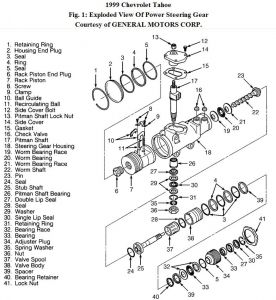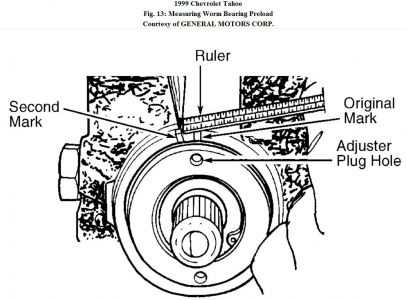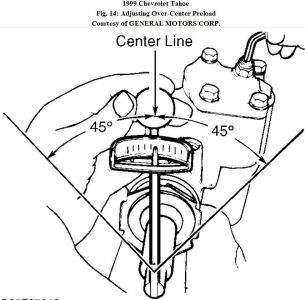Power Steering Pump Replacement (4.3L, 5.0L, 5.7L)
Removal Procedure
Tools Required
J 25034-C Power Steering Pump Pulley Remover
Place a drain pan below the pump.
Remove the hoses.
Cap the hoses.
Remove the drive belt. Refer to Drive Belt Replacement in Engine Mechanical 4.3L or Drive Belt Replacement in Engine Mechanical 5.0L and 5.7L.
Remove the pulley.
Install the J 25034-C .
Be sure the pilot bolt bottoms in the pump shaft by turning the nut to the top of the pilot bolt.
Hold the pilot bolt.
Turn the nut counterclockwise.
Remove the front mounting bolts.
Remove the rear mounting nuts from the studs.
Remove the electrical connector from EVO actuator.
Remove the pump.
Installation Procedure
Tools Required
J 25033-C Power Steering Pump Pulley Installer
Install the pump.
Install the front mounting bolts.
Tighten
Tighten the bolts to 50 N� m (37 lb ft).
Install the rear mounting nuts to the studs.
Tighten
Tighten the nuts to 50 N� m (37 lb ft).
Install the pulley.
Place the pulley on the end of the pump shaft.
Install the J 25033-C .
Be sure the pilot bolt bottoms in the pump shaft by turning the nut to the top of the pilot bolt.
Hold the pilot bolt.
Turn the nut clockwise.
Notice: Do not use an arbor press or internal damage to the pump will result.
Connect the pulley to the end of the power steering pump shaft. Install the pulley flush with 0.5 mm (0.020 in) play.
Install the drive belt. Refer to Drive Belt Replacement in Engine Mechanical 4.3L or Drive Belt Replacement in Engine Mechanical 5.0L and 5.7L.
Install the hoses.
Install the electrical connector to the EVO actuator.
Fill and bleed the system. Refer to Checking and Adding Power Steering Fluid and Bleeding the Power Steering System .
Inspect the hoses and the wiring for clearance.
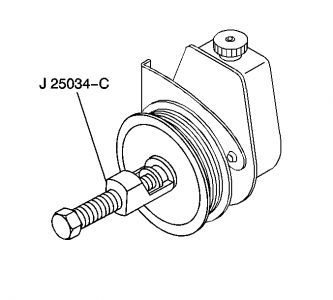
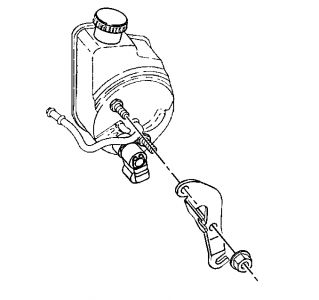
Monday, January 18th, 2021 AT 9:42 AM
(Merged)
